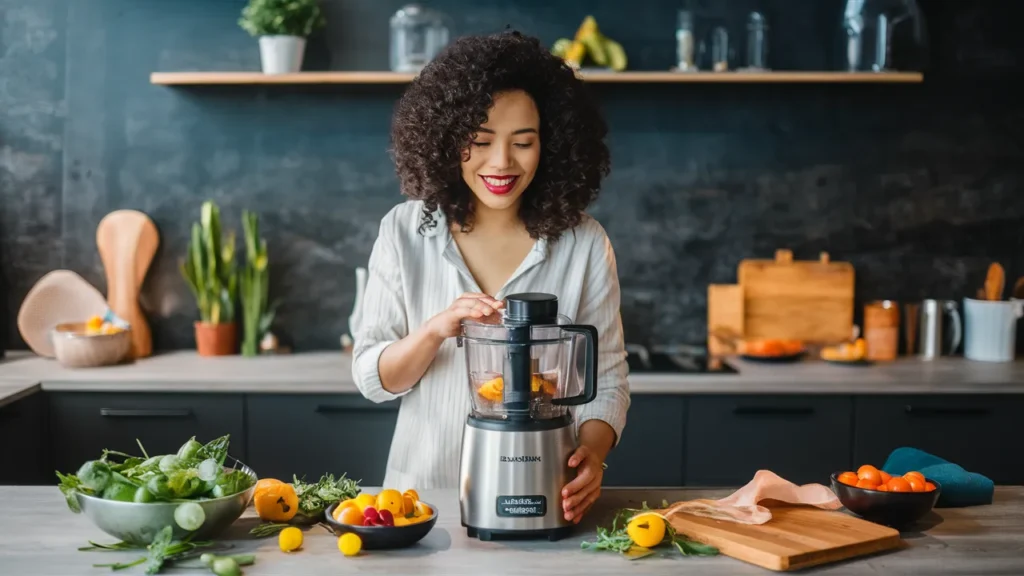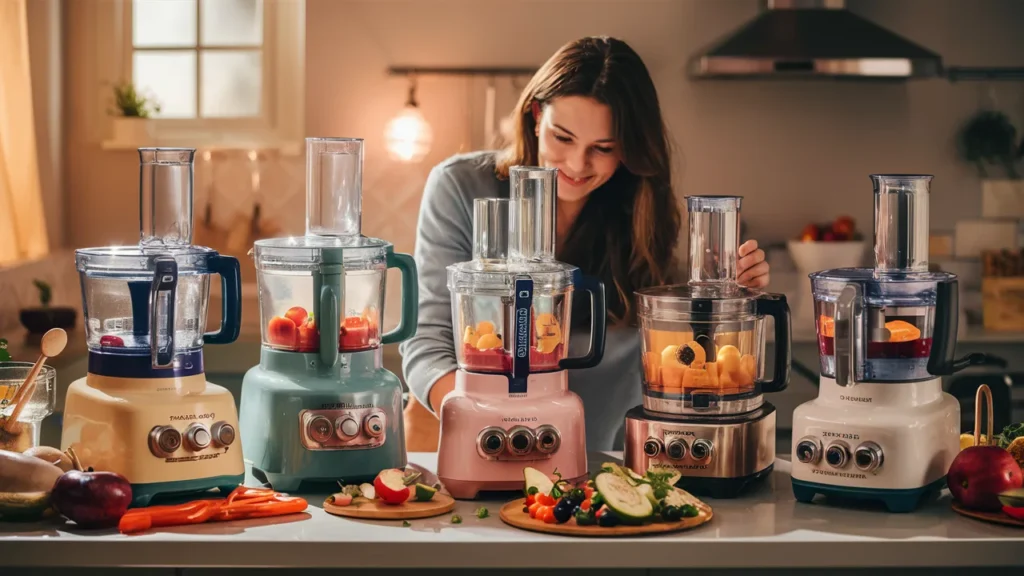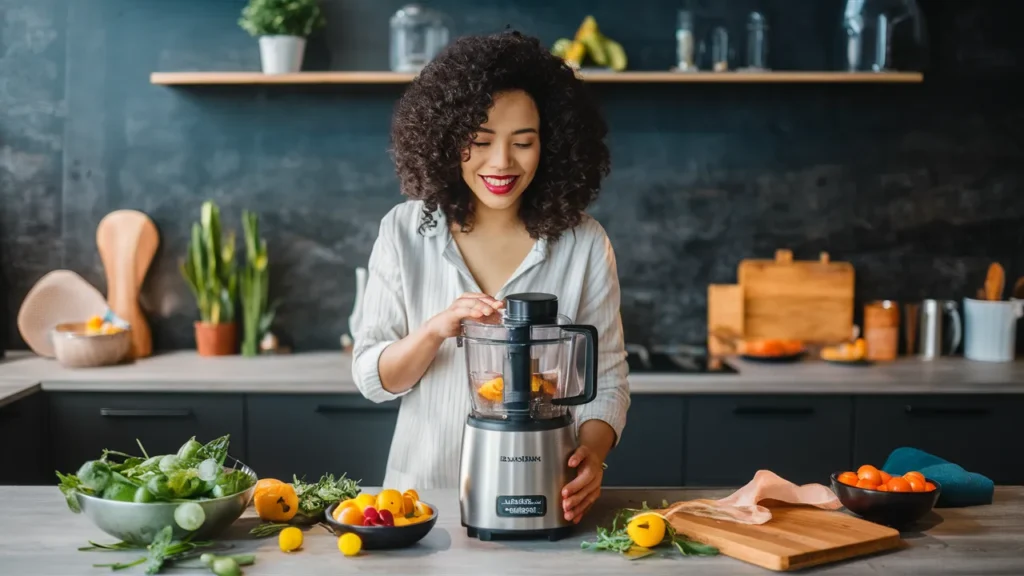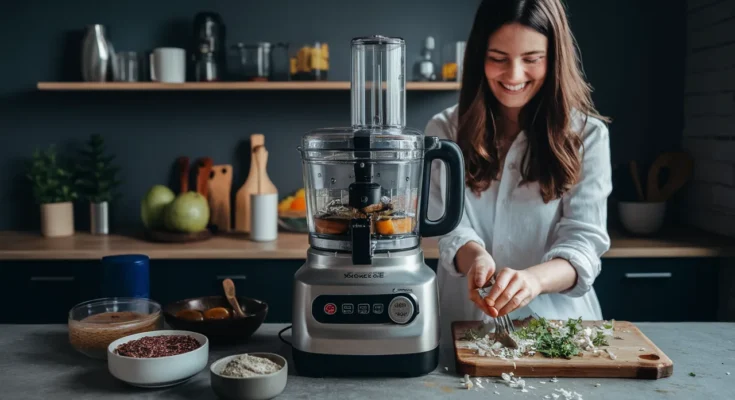In today’s bustling kitchens, a food processor can be a lifesaver, simplifying a variety of tasks from chopping vegetables to making dough. But with so many options available, selecting the right one for your needs can be overwhelming. Fear not! This guide will walk you through everything you need to know to make an informed decision.

Understanding Your Needs
Before diving into the world of food processors, it’s essential to understand your specific requirements. Consider the following factors:
- Size of Your Kitchen: Assess the available counter and storage space in your kitchen to determine the appropriate size of the food processor.
- Frequency of Use: Think about how often you’ll be using the food processor and for what purposes.
- Budget: Set a realistic budget based on your requirements and stick to it.
- Features: Identify the features you need, such as slicing, shredding, kneading, or pureeing.
Types of Food Processors
Food processors come in various types, each designed for specific functions. Understanding the differences between them will help you make the right choice.
- Mini Food Processors: Ideal for small kitchens or occasional use, mini food processors are compact and suitable for basic tasks like chopping herbs or making small batches of sauces.
- Full-Size Food Processors: These versatile appliances can handle a wide range of tasks, from chopping and slicing to kneading dough and pureeing ingredients. They’re perfect for larger families or frequent cooks.
- Combination Food Processors: Some models come with additional attachments, such as blenders or juicers, providing more versatility in the kitchen.

FAQs About Food Processors
Now, let’s address some common questions that arise when choosing a food processor:
1. What’s the Difference Between a Food Processor and a Blender?
While both appliances can puree ingredients, food processors are better suited for tasks like chopping, slicing, and shredding. Blenders are designed primarily for liquids and are ideal for making smoothies, soups, and sauces.
2. Can I Use a Food Processor to Knead Dough?
Yes, many food processors come with a dough blade specifically designed for kneading dough. However, it’s essential to check the capacity and power of the food processor to ensure it can handle heavy dough.
3. Are Food Processors Dishwasher Safe?
Not all food processors are dishwasher safe, so it’s crucial to check the manufacturer’s instructions before cleaning. However, most models come with removable parts that can be washed in the dishwasher for convenience.
4. How Much Wattage Do I Need?
The wattage of a food processor determines its power and performance. For basic tasks like chopping and pureeing, a lower wattage (around 400-600 watts) is sufficient. However, for more demanding tasks like kneading dough or shredding hard vegetables, opt for a higher wattage (800 watts or above).
5. Are There Any Safety Features to Consider?
Look for food processors with safety features like interlocking mechanisms and overload protection to prevent accidents and damage to the appliance.
6. Can I Use a Food Processor to Grind Coffee Beans or Spices?
Yes, many food processors come with a grinding attachment specifically designed for grinding coffee beans, spices, and nuts. However, it’s essential to clean the appliance thoroughly between uses to avoid flavor transfer.

7. What Attachments Should I Look for?
The attachments you need will depend on your cooking habits and preferences. Common attachments include slicing discs, shredding discs, dough blades, and citrus juicers. Choose a food processor that comes with the attachments you’ll use most frequently.
8. How Do I Maintain My Food Processor?
To ensure your food processor remains in top condition, clean it thoroughly after each use and store it in a dry place away from moisture and heat. Regularly inspect the blades and attachments for signs of wear and tear, and replace them as needed.
Conclusion
A food processor is a valuable addition to any kitchen, streamlining meal preparation and saving you time and effort. By understanding your needs, considering the different types of food processors available, and addressing common questions, you can confidently choose the right one for your kitchen.



I visited a lot of website but I conceive this one has something extra in it in it